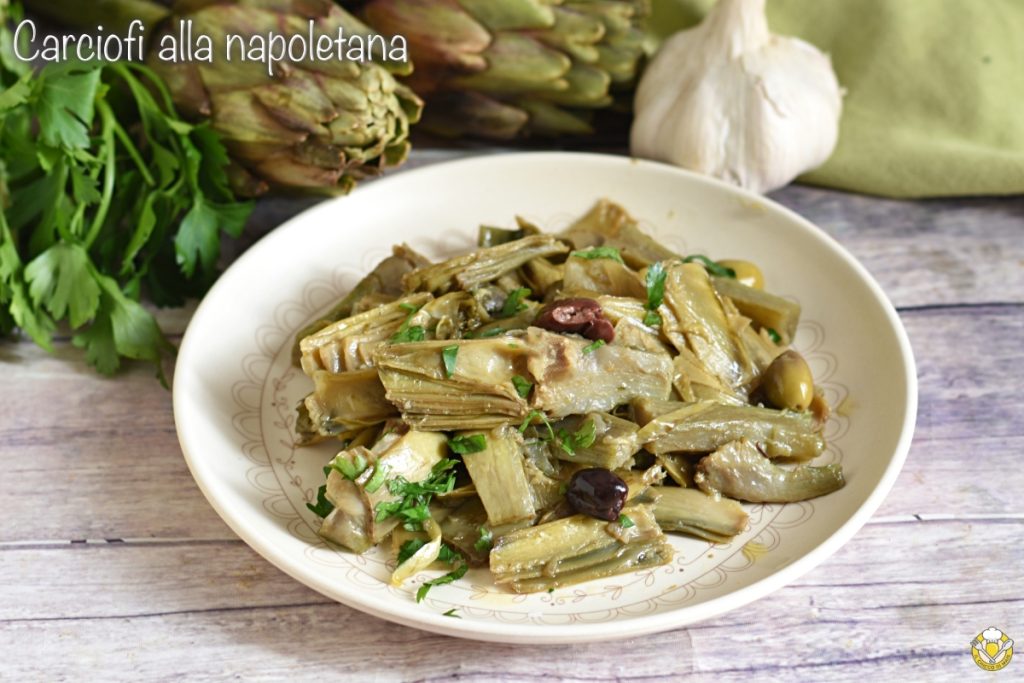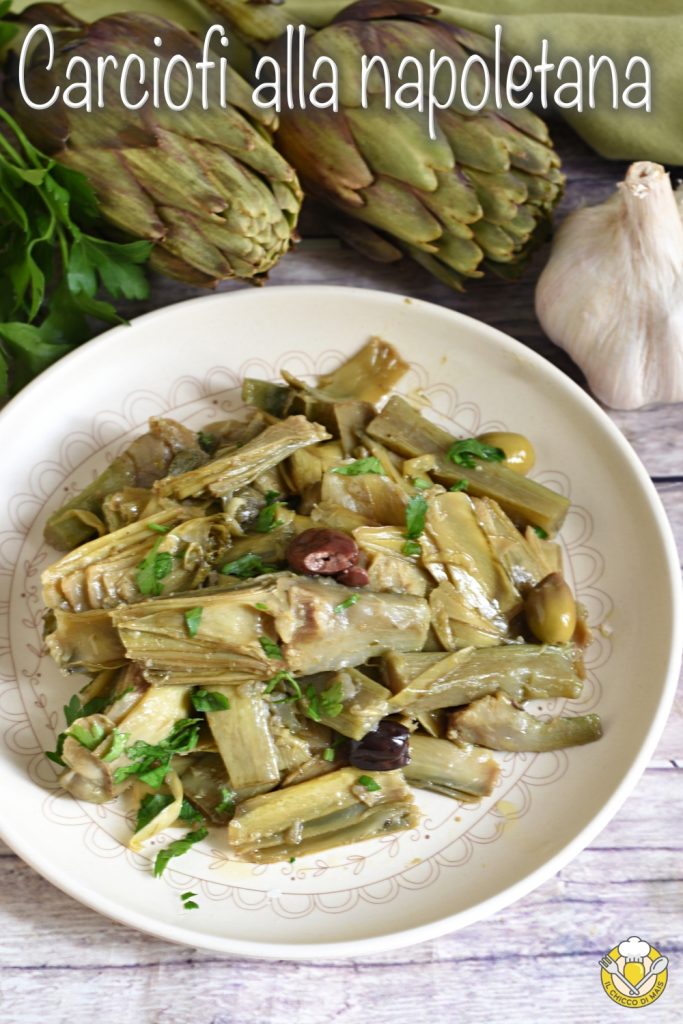Among the many artichoke recipes you can try during this time, when they are in the peak of their season, Neapolitan braised artichokes are a simple, quick, and flavorful side dish. In this preparation, the artichokes are cut into wedges and cooked in a pan with a little water – hence the term “braised” – and enriched with capers and Gaeta olives, two iconic ingredients of Campanian cuisine. The result is a dish with an intense and balanced taste: the delicacy of the artichokes blends perfectly with the saltiness of the capers and the slightly bitter note of the olives. The process is reminiscent of the classic pan-fried artichokes, but with an additional difference: while the fresh aroma of mint prevails in the latter recipe, Neapolitan artichokes usually use oregano and parsley, two herbs that better complement the flavor of olives and capers. Perfect to serve alongside meat or fish dishes, Neapolitan braised artichokes are prepared in a few minutes and allow you to bring a tasty and different side dish to the table.
You might also be interested in:

- Difficulty: Very Easy
- Cost: Economical
- Preparation time: 20 Minutes
- Portions: 4People
- Cooking methods: Stovetop
- Cuisine: Italian Regional
- Region: Campania
- Seasonality: Fall, Winter, and Spring
- Energy 196.60 (Kcal)
- Carbohydrates 21.31 (g) of which sugars 1.76 (g)
- Proteins 5.29 (g)
- Fat 12.43 (g) of which saturated 1.81 (g)of which unsaturated 1.28 (g)
- Fibers 10.34 (g)
- Sodium 298.44 (mg)
Indicative values for a portion of 143 g processed in an automated way starting from the nutritional information available on the CREA* and FoodData Central** databases. It is not food and / or nutritional advice.
* CREATES Food and Nutrition Research Center: https://www.crea.gov.it/alimenti-e-nutrizione https://www.alimentinutrizione.it ** U.S. Department of Agriculture, Agricultural Research Service. FoodData Central, 2019. https://fdc.nal.usda.gov
Ingredients for Neapolitan Braised Artichokes
- 6 artichokes (violet)
- 1 clove garlic
- 1.4 oz Gaeta olives (pitted)
- 0.7 oz salted capers
- 4 tablespoons extra virgin olive oil
- 1 pinch salt
- to taste pepper
- 1 pinch oregano
- 1 sprig parsley (chopped)
- 1 lemon (for cleaning the artichokes)
Tools
- 1 Cutting Board
- 1 Knife
- 1 Bowl
- 1 Pan large non-stick with lid
How to Prepare Braised Artichokes with Olives and Capers
To prepare the Neapolitan artichokes, start by cleaning the artichokes. Here you will find the step-by-step tutorial with video. Once cleaned, cut the stem, leaving only 2-3 cm attached. The rest can be peeled from the outer part and cooked together with the braised artichokes, or used with other artichokes to prepare a risotto or a velouté. Cut the artichoke heads in half and then into quarters, removing any choke with a knife (1). If the wedges are very large, you can cut them in half again (2). As you clean and cut the artichokes, place them in acidulated water with the juice of 1 lemon to prevent them from browning (3).

Pour the oil into a large non-stick pan and add the peeled garlic clove (4). Let it fry lightly, then add the artichokes after draining them. Season with a good pinch of salt, some pepper, and a pinch of oregano (5). Let them flavor for a minute or two over high heat, stirring often. Then add half a cup of water (6).

Mix well, cover with a lid (7) and let the artichokes cook over low heat for about 15 minutes, stirring occasionally. When they are tender, add the pitted olives and the capers after rinsing them under running water (8). Mix and let them flavor uncovered for 2-3 minutes, then turn off the heat, remove the garlic clove, and add the chopped parsley (9).

Serve the Neapolitan braised artichokes immediately, as a side dish for meat or fish mains.

Storage
You can store the artichokes in the refrigerator, sealed in a glass container, for 2 or 3 days.
Tips and Variations
Traditionally, Neapolitan artichokes have Gaeta olives, which are typical of the area. However, if they are difficult to find in other regions, you can substitute them with Taggiasca or Greek olives, which are similar in taste to Gaeta olives, although not exactly the same.

